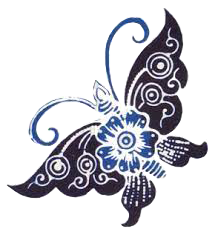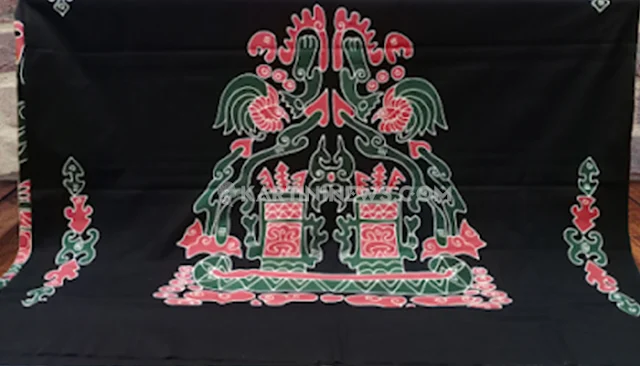Papuan Batik Penetrates to Foreign Countries
Batik business is no longer identical to being produced in Java. Papua has also started to penetrate this product that has been recognized by Unesco as a world heritage. There are more than 200 motifs ready to be chosen as souvenirs when PON XX is held in October.
The beautiful women and handsome men in pairs move to show off their clothes on the catwalk. The atmosphere is a little magical, accompanied by a narrative about the profile of the batik worn by the models regarding the meaning and background of the motif.
There is batik with a paddle motif, a bird of paradise motif, a wood carving motif, and so on. At the end of the event, an auction of the batik was held. Tens of millions were raised from the event.
Yes, that was the batik fashion show that I attended, in August 2007, when I first came to Jayapura as a journalist. The invitation to cover the Port Numbay batik fashion show at the grandest hotel in Jayapura City was my first experience. Unexpectedly, the owner of the event was a native of Port Numbay, named Jimmy Hendrick Afaar.
Jimmy Hendrick Afaar started his business on April 21, 2007. When he first started his batik business, Jimmy admitted that he was already interested in various Javanese batik patterns, and he decided to learn batik in Pekalongan. From his hometown of Jayapura, Jimmy managed to make a breakthrough, namely making Port Numbay batik and patented it as one of Papua's typical 'cloths'. Port Numbay is another name for Jayapura City.
The uniqueness of Port Numbay batik is the presence of boats and oars typical of Sentani, Jayapura. In addition, he also took wood carving motifs and tifa which are typical of several other Papuan tribes.
His batik business started by producing hand-written batik. In a month, Jimmy can produce 50 pieces of hand-made batik or hand-written batik per month. He employs 15 employees consisting of his neighbors' mothers.
His business grew rapidly, Jimmy expanded into the stamped batik model which was made by men and managed to produce 80 pieces per month. Jimmy's Small and Medium Enterprises (SMEs) continue to grow, thanks to the help of one of the craftsmen or native residents of Jayapura named Salomina. For her, the motifs that are drawn are not just decorations on the fabric. Each motif with a certain color has its own meaning.
Salomina is one of 25 active and longest-serving batik makers in Jimmy's studio. The Abepura resident started learning to make batik in 2007 and now she has trained other residents to make batik too.
Jimmy believes that Port Numbay batik has a bright future. Through his innovation, Jimmy hopes that his batik can be widely known throughout Papua, even abroad.
The batik business is no longer identical and only produced in Java. Papua has also begun to penetrate this product that has been recognized by Unesco as a world heritage. One of them is through Port Numbay Batik crafts.
Port Numbay Batik has its own standards. To maintain the quality of his products, Jimmy does not hesitate to bring in trainers from Java, especially Yogyakarta, to train his workers. He also sends his workers to Java. The trainers were brought in from a batik training center in Yogyakarta.
Male employees work on stamped batik while women work on hand-drawn batik which requires precision in its workmanship. Of his 15 employees, every month Jimmy's batik production reaches 2,000 pieces of stamped batik and 16 pieces of hand-drawn batik made of silk and cotton. His batik products have even reached Surabaya and Jakarta.
Before focusing on batik, Jimmy had joined designer Poppy Dharsono. In producing batik, he prefers cotton-based batik rather than silk, considering the hot climate in Papua. Meanwhile, silk is intended for consumers with bigger pockets. And the processing of silk material takes longer, taking 3 months.
More than just a business, through his hand-made batik, Jimmy claims to be able to spread the word about the natural beauty, tourism, and culture of Papua. To introduce his products, Jimmy participated in various exhibitions. Thanks to the exhibition, he was also invited by an Italian designer to visit the land of pizza.
By carrying the diversity of nature, culture, and folklore, Papua through Jimmy's hands has collected around 200 motifs. The many motifs are because each tribe in Papua has a different culture and customs. The name of this batik motif is adjusted to the name of the tribe such as Kamoro Batik, Amugme, Honay, Asmat, Sentani, Kayu Pulau, or Griminawa. Another characteristic of Papuan Batik is the dominant use of bright colors, such as yellow, green, white, red, and navy blue.
Although he has been busy accompanying the Papua indoor men's volleyball team athletes who are conducting training centers (TC) in Bandung for the XX PON for the past two years, Jimmy Hendrick admitted that his batik production is still running and can be monitored from afar. "My batik products are still batik with various motifs that we will introduce to tourists and PON XX tourists," he wrote in a short message via Whatsapp.
Jimmy explained that the price for two meters of his hand-drawn batik cloth is sold for IDR 600,000 per piece, and the 2.5 meter size is priced at IDR 650,000 per piece. While the 3 meter size is sold for IDR 700,000 per piece.
Regarding the productivity of his batik per month, Jimmy said that for the two meter size, his party can produce up to 25 pieces. Then, the 2.5 meter 20 pieces and the 3 meter can only be produced 10 pieces.
Batik is not only found in Indonesia, besides Africa, it is also found in Malaysia, Japan, China, India, Germany, and the Netherlands. The art of dyeing cloth is an ancient tradition. The discovery in Egypt shows that this technique has been known since the fourth century BC.
So when you come to the PON XX Jayapura, Mimika, and Merauke events, you have to thicken your pockets so you can buy lots of souvenirs.

